Summer Water Quality Work Gets Underway . . .
. . . In the lab
On Monday, June 13, the John and Daria Barry Foundation Water Quality Laboratory became fully operational as the first samples of the 2022 seasonal water quality monitoring program arrived from Queens, the Bronx, and Westchester, NY, and Greenwich, CT. Our Water Quality team at last got to work in the state-of-the-art centerpiece of our new Larchmont office.
That same day, our team analyzed samples from the Unified Water Study in the lab. In previous years, we had to ship out thousands of UWS samples to external labs.
Weekly results from the Water Quality Monitoring program are updated at noon every Friday and can be viewed on our website. You also can check out our latest Beach Grades, based on 2021 data, at SoundHealthExplorer.org.
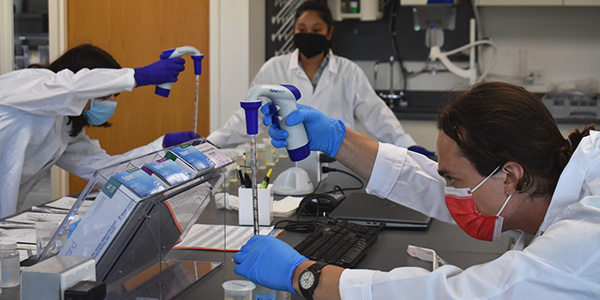
. . . On the water
This summer’s first run for the Terry Backer III is in the books!
On Tuesday, our expanded Long Island Soundkeeper team – Soundkeeper Bill Lucey, Soundkeeper Associate Emma DeLoughry, and intern Jeanette Ahuatl – took the boat out for a short cruise to make sure everything was functioning properly, fill up the gas tank, and get Emma and Jeanette better acquainted with the local waterways. Now, the fun and the real work begins.
“I’m so excited to be out on the water this summer,” said Emma, who will patrol bays and harbors in the western Sound aboard the TBIII from a home dock in Bridgeport, CT, “working to protect the public’s right to fishable, swimmable water in Long Island Sound!”
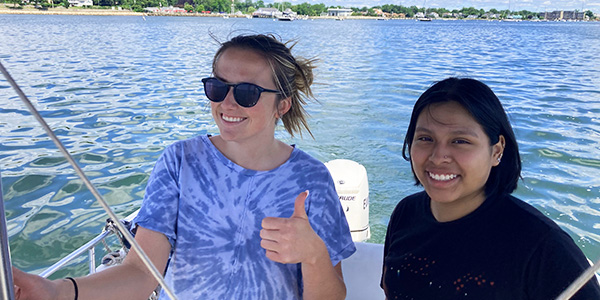
. . . In the field
All spring, Sam Marquand prepared his students from the Boys & Girls Club of Mount Vernon, NY, for their day in the field. On Tuesday, Sam prepped the field.
Sam, our Clean Water Advocate, set up a series of flags five meters apart in a stretch of the Hutchinson River adjacent to the Parkway that shares its name. He was joined by volunteer Siddharth Motwani, a former Save the Sound staffer currently involved with the Hutchinson River Restoration Project and the Save A Million Bass Project.
Later this month, the students will conduct the macroinvertebrate sampling they’ve trained for. They’ll walk each transect from flag to flag with a kick net, dislodge the rocks on the riverbed, and collect samples of the insects and critters that live under them. They’ll then sort the samples into ice trays and identify them. Classifying them by type and order can help determine the health of that section of the river.
This outing will take place shortly after the start of sampling season for WAVE – Water Assessments by Volunteer Evaluators, a program created by New York State’s Department of Environmental Conservation to train and mobilize community scientists. In its 10-year history, WAVE teams have conducted approximately 1,200 evaluations across the state . . . but none in Mount Vernon.
“I told them, ‘We’re going to be the first ones to do this in our area. You guys are breaking ground,’” said Sam. “That’s really important and really cool.”
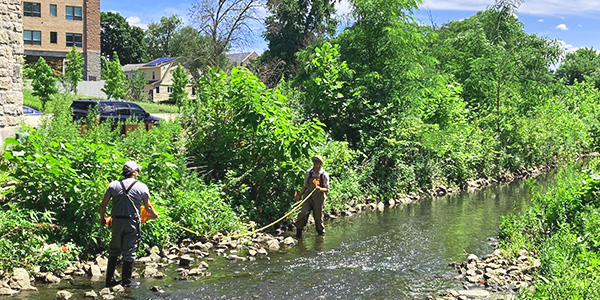
Reducing Harmful Algal Blooms
Nutrient pollution is a leading cause of these slimy and potentially toxic messes
Nathaniel Goetz, one of our seasonal water quality interns, was taking a sample from Sheldrake Lake in Larchmont, N.Y., when he noticed what looked like “streaks of spilled paint scattered throughout the lake.” He submitted his photos and notes to the Department of Environmental Conservation, which confirmed what Nathaniel had suspected – a Harmful Algal Bloom (HAB) – and added it to its online map of recently reported HABs.
While freshwater HAB monitoring is not a primary focus of our Water Quality team, there are two things everyone could be doing to address this growing problem:
- If you see something, report it to NYS DEC.
- Consider how you care for your yard and garden. Lawn fertilizers are a major source of nutrient pollution. Remember: Healthy Yard, Healthy Sound.
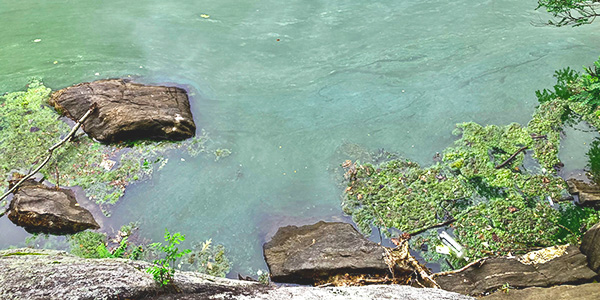
Clean Drinking Water is on the Ballot in New York
Introducing the Environmental Bond Act
Over the coming months, voters in New York are going to learn a lot about the Clean Water, Clean Air, and Green Jobs Bond Act. As November 8 approaches, we’ll be reminding you to Flip Your Ballot and Vote Yes. For now, we encourage you to familiarize yourself with the Bond Act and how it will safeguard clean drinking water and other resources we all depend on.
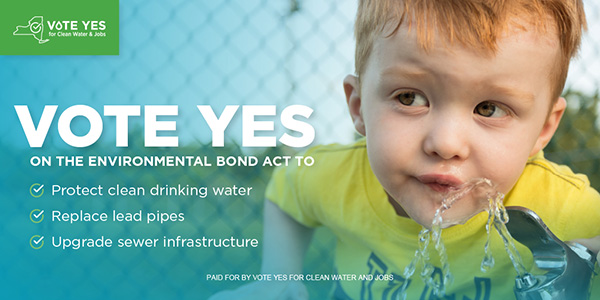
A Wave of Webinars to Watch
The first half of 2022 has seen a busy run of clean water webinars. Thank you to everyone who joined us to ask questions and share observations! If you missed them, you can still watch the video recordings!
- Recordings for all three webinars from the Long Island Sound Coastal Watershed Network’s series, “Driving Local Actions to Tackle Water Pollution,” are available now:
- “The Impacts of Stormwater Pollution in Southeast Connecticut” was featured on Connecticut Public Radio. A recording will be available on our YouTube channel soon!
Find future webinars and other upcoming events on our website.
